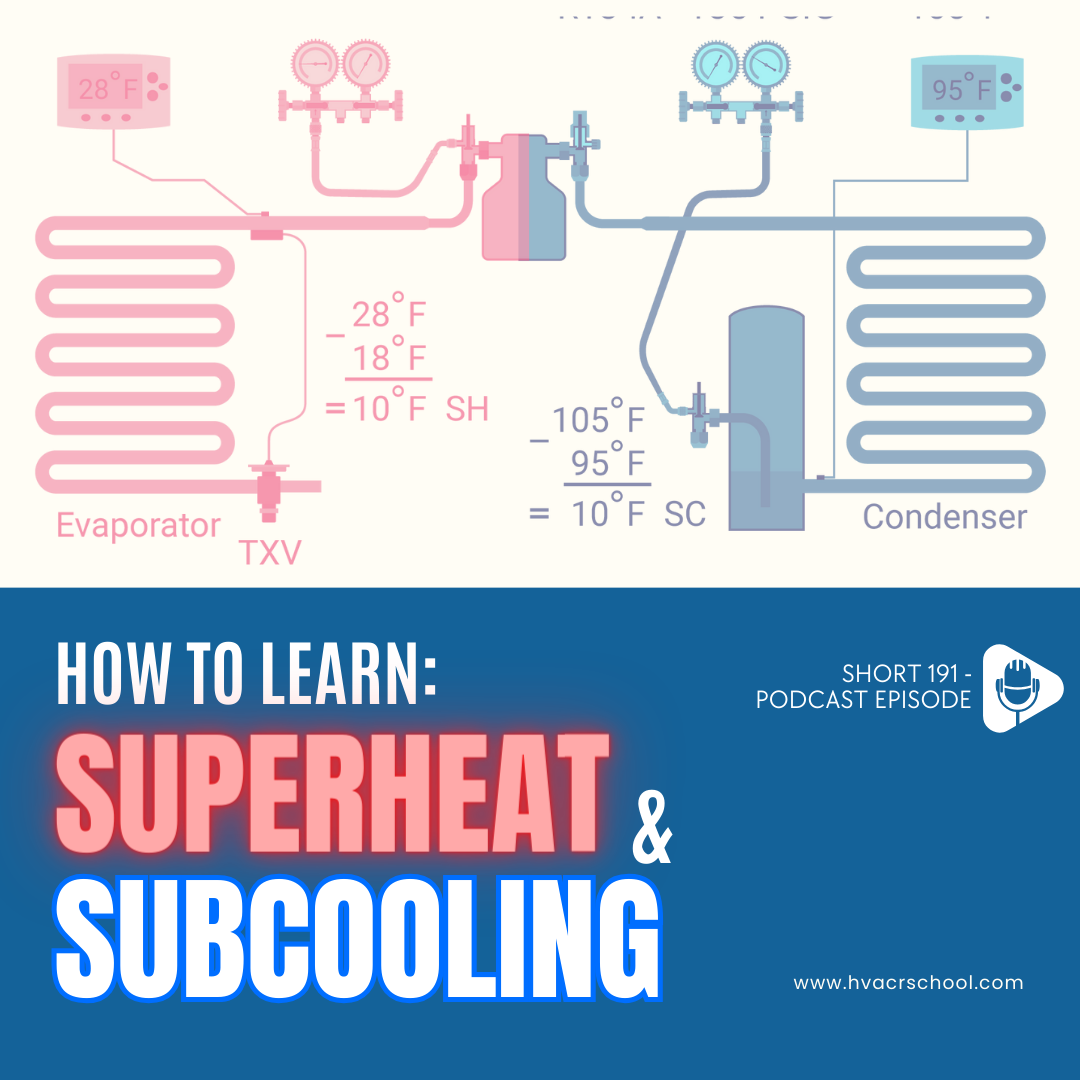Q&A – How to Learn Superheat & Subcooling – Short #191

In this short podcast episode, Bryan answers an audience member's question and explains how to learn superheat & subcooling, two fundamental aspects of the HVAC/R trade. You can submit questions of your own at https://www.speakpipe.com/hvacschool.
Saturation is when a substance is in the liquid and vapor state in the same place. Eugene Silberstein likes to help us envision it by encouraging us to think of a horizon line on the ocean; anything below it is fully liquid (subcooled, what a submarine would travel through), and anything above it is a vapor (superheated, which a flying superhero would travel through).
Superheat and subcooling can tell you a bit about how the HVAC system's main components are operating. High superheat indicates that there's more vapor in the evaporator, and you're not getting as much efficiency out of your evaporator as you probably could. High subcooling indicates that you're stacking more liquid refrigerant in the condenser, which can be good for efficiency but may also reduce the area of the condenser dedicated to condensing the refrigerant.
Superheat and subcooling are NOT just there to help you set the charge; they can tell you a lot about a system and its components.
Ty Branaman has a great webpage about superheat, subcooling, and saturation at https://www.love2hvac.com/saturation-superheat-subcooling. You can also visit his YouTube channel at https://www.youtube.com/@love2hvac.
Craig Migliaccio (AC Service Tech) also has an excellent book on the topic, which you can learn more about at https://www.acservicetech.com/ac-book. You can also visit his YouTube channel at https://www.youtube.com/@acservicetechchannel.
Learn more about the 5th Annual HVACR Training Symposium at https://hvacrschool.com/Symposium24.
If you have an iPhone, subscribe to the podcast HERE, and if you have an Android phone, subscribe HERE.”
Subscribe to our YouTube channel at https://www.youtube.com/@HVACS.
Check out our handy calculators HERE or on the HVAC School Mobile App (Google Play Store or App Store).
Author:









Comments
To leave a comment, you need to log in.
Log In